Jaguar I-Pace VS Toyota C-HR – Specs, Efficiency & Price Comparison
Which model is the better choice – the Jaguar I-Pace or the Toyota C-HR? We compare performance (400 HP vs 223 HP), boot capacity (638 L vs 447 L), efficiency (25.20 kWh vs 0.80 L), and of course, the price (79200 £ vs 30000 £).
Find out now which car fits your needs better!
The Jaguar I-Pace (SUV) is powered by a Electric engine and comes with a Automatic transmission. In comparison, the Toyota C-HR (SUV) features a Full Hybrid or Plugin Hybrid engine and a Automatic gearbox.
When it comes to boot capacity, the Jaguar I-Pace offers 638 L, while the Toyota C-HR provides 447 L – depending on what matters most to you. If you’re looking for more power, you’ll need to decide whether the 400 HP of the Jaguar I-Pace or the 223 HP of the Toyota C-HR suits your needs better.
There are also differences in efficiency: 25.20 kWh vs 0.80 L. In terms of price, the Jaguar I-Pace starts at 79200 £, while the Toyota C-HR is available from 30000 £.
Compare all the key specs now and find out which model fits your lifestyle best!
Jaguar I-Pace
The Jaguar I-Pace represents a remarkable fusion of cutting-edge electric performance and iconic British luxury. With its sleek design and spacious interior, this model redefines what one can expect from an electric vehicle in terms of style and comfort. Its impressive driving dynamics and advanced technology make it a standout choice for those looking to make a statement on the road.
details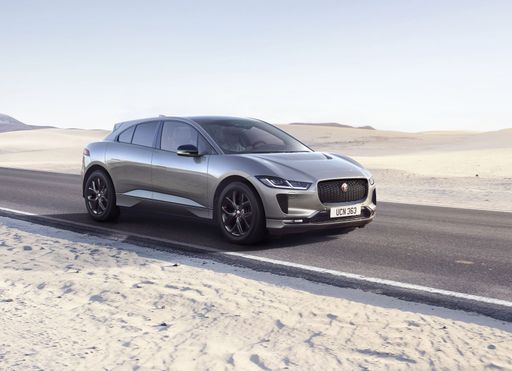 @ media.jaguar.com
@ media.jaguar.com
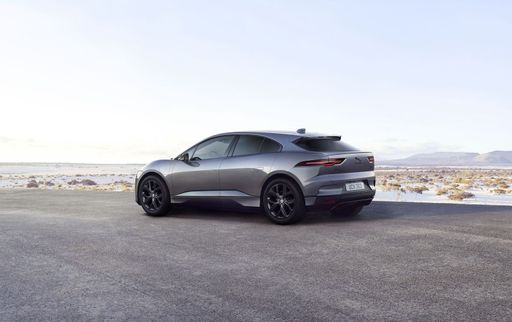 @ media.jaguar.com
@ media.jaguar.com
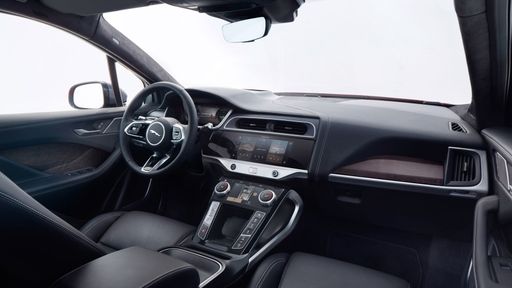 @ media.jaguar.com
@ media.jaguar.com
Toyota C-HR
The Toyota C-HR stands out with its distinctive and bold design that combines sleek, angular lines with a sporty posture. Its comfortable and stylish interior is equipped with advanced technology features, providing a seamless driving experience. The vehicle offers impressive handling and performance, making it a compelling choice for those who appreciate a blend of practicality and flair on the road.
details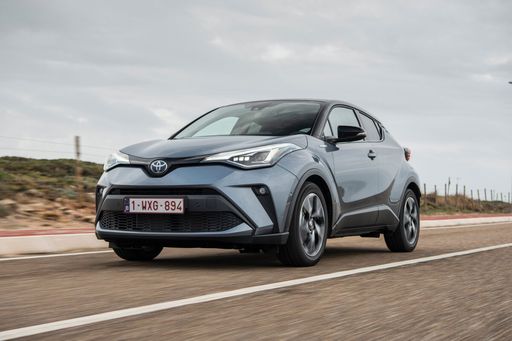 @ Toyota
@ Toyota
 @ Toyota
@ Toyota
 @ Toyota
@ Toyota
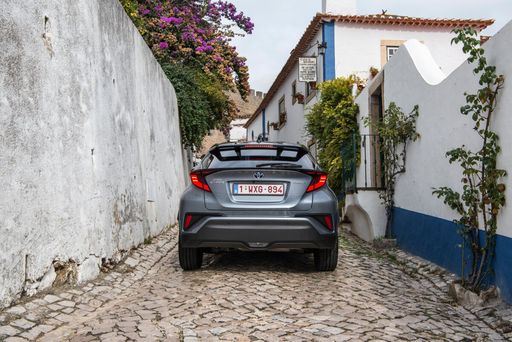 @ Toyota
@ Toyota
 @ Toyota
@ Toyota

|

|
|
|
|
Costs and Consumption |
|
|---|---|
|
Price
79200 - 85500 £
|
Price
30000 - 42800 £
|
|
Consumption L/100km
-
|
Consumption L/100km
0.8 - 5.1 L
|
|
Consumption kWh/100km
25.20 kWh
|
Consumption kWh/100km
-
|
|
Electric Range
469 km
|
Electric Range
67 - 68 km
|
|
Battery Capacity
84.70 kWh
|
Battery Capacity
-
|
|
co2
0 g/km
|
co2
17 - 115 g/km
|
|
Fuel tank capacity
-
|
Fuel tank capacity
43 L
|
Dimensions and Body |
|
|---|---|
|
Body Type
SUV
|
Body Type
SUV
|
|
Seats
5
|
Seats
5
|
|
Doors
5
|
Doors
5
|
|
Curb weight
2226 kg
|
Curb weight
1505 - 1755 kg
|
|
Trunk capacity
638 L
|
Trunk capacity
350 - 447 L
|
|
Length
4682 mm
|
Length
4362 mm
|
|
Width
2011 mm
|
Width
1832 mm
|
|
Height
1566 mm
|
Height
1558 - 1564 mm
|
|
Payload
444 kg
|
Payload
375 - 425 kg
|
Engine and Performance |
|
|---|---|
|
Engine Type
Electric
|
Engine Type
Full Hybrid, Plugin Hybrid
|
|
Transmission
Automatic
|
Transmission
Automatic
|
|
Transmission Detail
Reduction Gearbox
|
Transmission Detail
CVT
|
|
Drive Type
All-Wheel Drive
|
Drive Type
Front-Wheel Drive, All-Wheel Drive
|
|
Power HP
400 HP
|
Power HP
140 - 223 HP
|
|
Acceleration 0-100km/h
4.80 s
|
Acceleration 0-100km/h
7.4 - 9.9 s
|
|
Max Speed
200 km/h
|
Max Speed
175 - 180 km/h
|
|
Torque
696 Nm
|
Torque
-
|
|
Number of Cylinders
-
|
Number of Cylinders
4
|
|
Power kW
294 kW
|
Power kW
103 - 164 kW
|
|
Engine capacity
-
|
Engine capacity
1798 - 1987 cm3
|
General |
|
|---|---|
|
Model Year
2023
|
Model Year
2024 - 2025
|
|
CO2 Efficiency Class
A
|
CO2 Efficiency Class
C, B
|
|
Brand
Jaguar
|
Brand
Toyota
|
Jaguar I-Pace
Discovering Innovation: The Jaguar I-Pace
The Jaguar I-Pace represents a bold leap into the future of automotive design and engineering, blending luxury, performance, and sustainability into one stunning package. As Jaguar’s first all-electric model, the I-Pace not only showcases their commitment to innovation but also sets a new standard in the electric vehicle market.
A Powerhouse on Wheels
Under the sleek body of the Jaguar I-Pace lies an electric motor capable of delivering an impressive 400 PS (294 kW). This translates into an exhilarating driving experience, with the I-Pace accelerating from 0 to 100 km/h in just 4.8 seconds. The instant torque provided by the motor ensures unparalleled responsiveness, making every drive thrilling.
Efficient Performance
Despite its powerful performance, the Jaguar I-Pace is equally impressive in terms of efficiency. Boasting a consumption rate of just 25.2 kWh per 100 km and an electric range of up to 469 km, it’s clear that Jaguar has engineered this model to deliver uncompromised efficiency. With a noteworthy CO2 emission of 0 g/km, the I-Pace stands as a testament to the possibilities of sustainable luxury vehicles.
Advanced Engineering and All-Wheel Drive
The Jaguar I-Pace features an all-wheel-drive system, offering superior handling and stability, crucial for a vehicle with such performance credentials. The combination of dual electric motors and a sophisticated reduction gearbox enhances its prowess on the road, ensuring a smooth and responsive drive regardless of terrain.
A Design to Impress
One look at the Jaguar I-Pace, and its embodiment of modern elegance is unmistakable. With dimensions of 4682 mm in length, 2011 mm in width, and 1566 mm in height, this SUV is both spacious and stylish. The interior is equally inviting, with premium materials and high-tech features offering a luxurious driving experience for up to five passengers.
Technological Marvel
The I-Pace is packed with cutting-edge technology, from its intuitive infotainment system to its advanced safety features. The vehicle's aerodynamic design not only enhances its aesthetic appeal but also contributes to its efficiency and range, making it a marvel of modern engineering.
Sustainability Without Compromise
Jaguar positions the I-Pace as a trailblazer in eco-friendly driving, earning an A-class CO2 efficiency rating. It underscores a commitment to sustainability without compromising the luxury and performance that aficionados have come to expect from the Jaguar brand.
Conclusion
The Jaguar I-Pace is more than just an electric vehicle; it represents a future where performance, luxury, and sustainability coexist seamlessly. With its groundbreaking design and technology, the I-Pace not only captures the essence of Jaguar's rich heritage but also paves the way for the brand's journey into the electric era.
Toyota C-HR
Revolutionising the Crossover Segment: The Toyota C-HR
The Toyota C-HR has firmly established itself as a standout contender in the compact crossover segment. Known for its distinct design and hybrid capabilities, the C-HR continues to prioritise innovation and efficiency. In this article, we delve into the technical details that make the 2024 iteration a compelling choice for discerning buyers.
Distinctive Design and Aerodynamics
The Toyota C-HR boasts a striking design that combines angular lines with modern aesthetics. This isn't merely for show; the design enhances aerodynamics, improving fuel efficiency and handling. With dimensions of 4362mm in length and a sophisticated structure, the C-HR strikes a balance between urban agility and on-road stability.
Impressive Hybrid Powertrains
The C-HR lineup offers innovative hybrid and plug-in hybrid drivetrain options. The full hybrid system is tailored for those who seek both economic and environmental benefits. It combines a petrol engine with an electric motor to deliver power outputs ranging from 140 to 223 PS, achieving remarkable fuel consumption rates from 0.8 to 5.1 L/100km. The 2.0 Plug-In Hybrid variant impresses with an electric range of 67 km, ideal for urban commuters.
Unmatched Efficiency and Performance
Acceleration figures for the C-HR range from 7.4 to 9.9 seconds to reach 0-100 km/h, ensuring a responsive driving experience. Maximum speeds between 175 and 180 km/h cater to those who appreciate a bit of zest on the open road. Coupled with CVT automatic transmission and both front-wheel and all-wheel-drive configurations, the C-HR adapts to various driving conditions with ease.
Advanced Technology and Features
Inside, the C-HR is equipped with the latest technology aimed at providing connectivity and comfort. The model hosts an array of features across its diverse trim levels, including Business Edition, Lounge, and the sporty GR SPORT. Each variant is designed to meet the demands of different lifestyles, ensuring there's a C-HR model to suit every taste.
Sustainability and Cost Efficiency
With CO2 emissions ranging from 19 to 115 g/km, the C-HR stands as a testament to Toyota's commitment to sustainability. Financially savvy consumers will also appreciate the running cost, with monthly expenses from €959 to €1204, and a cost per km as low as 38.4 cents. Such efficiency makes the vehicle an attractive option for eco-minded buyers.
Conclusion: A Forward-Thinking Choice
The 2024 Toyota C-HR embodies Toyota's forward-thinking approach to automotive innovation, blending eco-friendly hybrid technologies with stylish design and practicality. It offers a glimpse into the future of driving, where efficiency meets elegance. Whether you're a city dweller or an adventure seeker, the C-HR promises a driving experience that is both enjoyable and environmentally conscious.
The prices and data displayed are estimates based on German list prices and may vary by country. This information is not legally binding.
